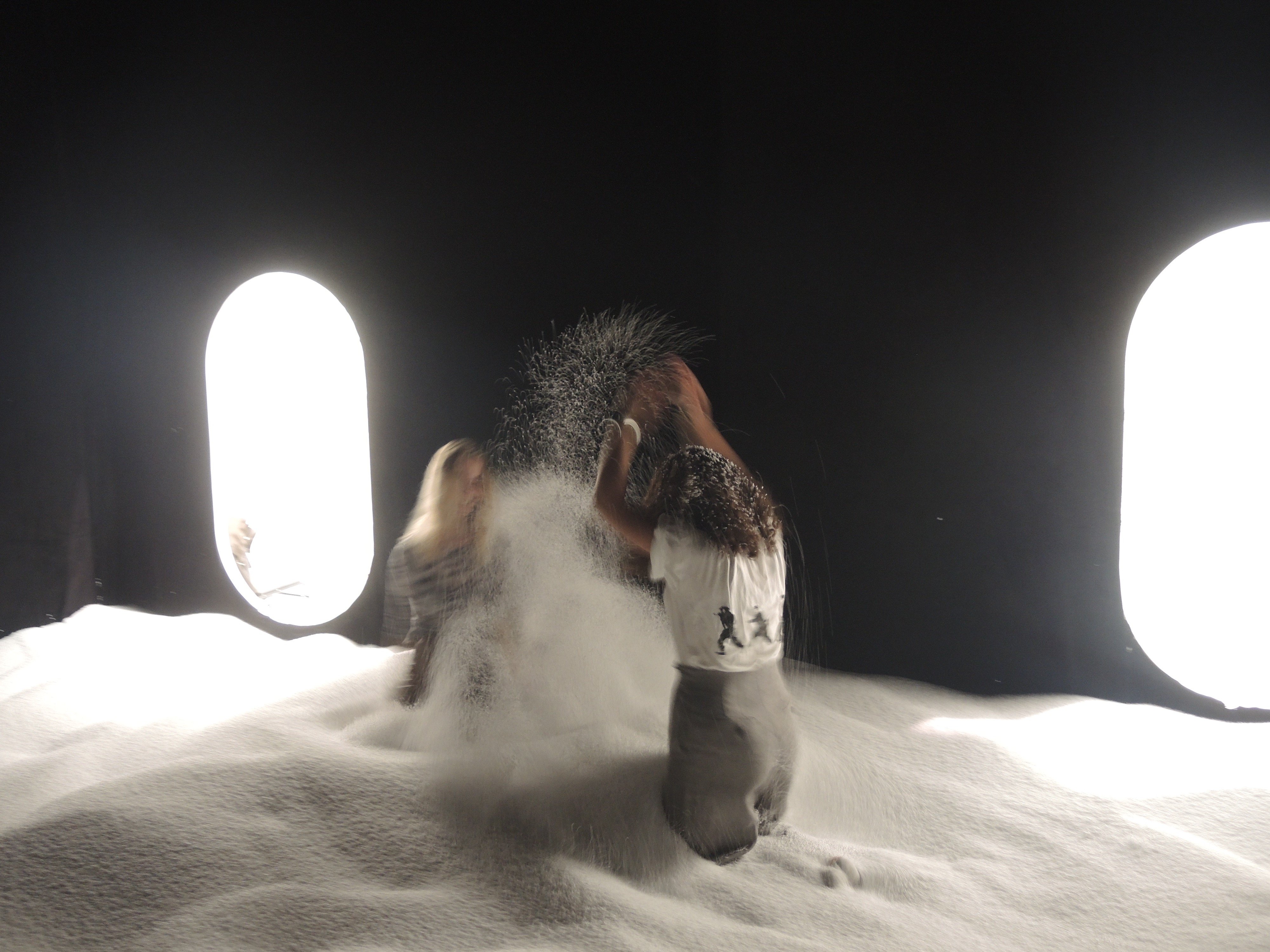
It’s not often that you see unadulterated, childlike joy at an art fair, but that was exactly what people experienced on May 7, the last day of Frieze New York, when they set foot in the incredible moonscape was that was Luna, a darkened room filled with thousands upon thousands of tiny polystyrene pellets—the kind typically used to make foam cups and packing materials.
The piece was originally conceived by Fabio Mauri (1926–2009), a postwar Italian avant-garde artist known for his work in performance, sculpture, installation, and film. It was first installed as part of the experimental exhibition “Teatro delle Mostre” (May 6–31, 1968) at Rome’s Galleria La Tartaruga.
That seminal show, which presented one installation each day, was the inspiration for part of this year’s Frieze Projects, curated by Cecilia Alemani, art director and chief curator of the High Line. A special tribute space featured work by a different artist on each of the fair’s four days: two recreations of the gallery’s original projects and two new works by contemporary artists.
Polystyrene pellets. Courtesy of Dalian Bona Biological Technology Co., Ltd.
On opening day last week, guests had to content themselves with peering through a peephole to experience a recreation of Giosetta Fioroni’s 1968 performance La Spia Ottica, in which the artist sat in a model of her bedroom and allowed viewers to voyeuristically observe her through the tiny opening. By end of the day, their noses had left greasy smudges on the exterior side of the peephole. Contemporary twists on the experimental show included Ryan McNamara’s daylong participatory dance performance and Adam Pendleton’s performances with vocalist Alicia Hall Moran and a string quartet.
Fabio Mauri, Luna (1968). Courtesy of Fabio Mauri.
Wisely, Alemani saved Luna for last, providing a way for art lovers exhausted by a long week of fairs and events with a much-needed chance to blow off steam. Originally staged just six months before the Apollo 11 mission in 1969, Luna was meant to represent the surface of the moon. There are two round portal-like entryways into the space, which is lit only by the light reflecting off the constantly-shifting white balls. (Think of it as a grown-up, art historian-approved ball pit.)
Fair staff informed me that the production team was on site until five in the morning finishing installation, and that it took no less than 30 giant barrels of the polystyrene beads to fill the room. The resulting effect—an otherworldly landscape—was well worth the effort.
A guest covered in polystyrene foam balls from the restaging of Fabio Mauri’s Luna at the “Teatro delle mostre” tribute space for Frieze Projects at Frieze New York. Courtesy of Sarah Cascone.
Due to the fair’s scenic but somewhat inaccessible location on Randall’s Island, Frieze perhaps attracts less repeat visitors than other fairs, and travel was made all the more complicated on Sunday due to road closures and traffic from the Five Boro Bike Tour. Nevertheless, Frieze devotees were richly rewarded if they had the patience to wait in line to enter Luna.
It took me an hour and a half to get to Frieze, even though I was coming from just across the Triborough Bridge at 125th Street (literally the closest point in Manhattan to Randall’s Island). After a long afternoon of art viewing, I got a tip while retrieving my belongings from the coat check, manned by curator Quito Ziegler, that I had to go back in to see the ball pit.
Guests play in the restaging of Fabio Mauri’s Luna at the “Teatro delle mostre” tribute space for Frieze Projects at Frieze New York. Courtesy of Sarah Cascone.
The wait was reportedly a half hour for a few precious minutes in the white wonderland that is Luna, where guests frolicked freely, making “snow angels” and submerging themselves in what essentially amounts to the innards of a beanbag chair.
We may have to wait another year for the return of Frieze New York, but thanks to Luna, I got to bring a little piece of the fair home with me: Despite my best efforts to clean myself off, I have a feeling I’ll be finding those tiny white particles throughout my apartment for weeks to come.